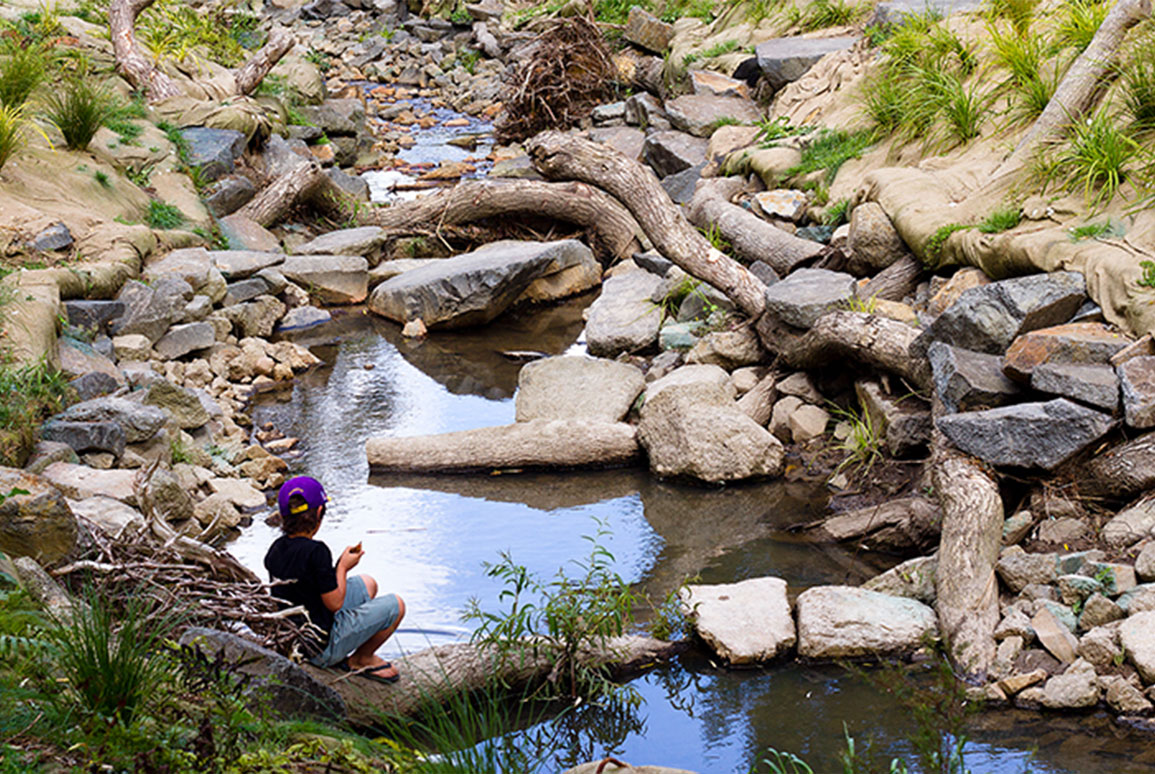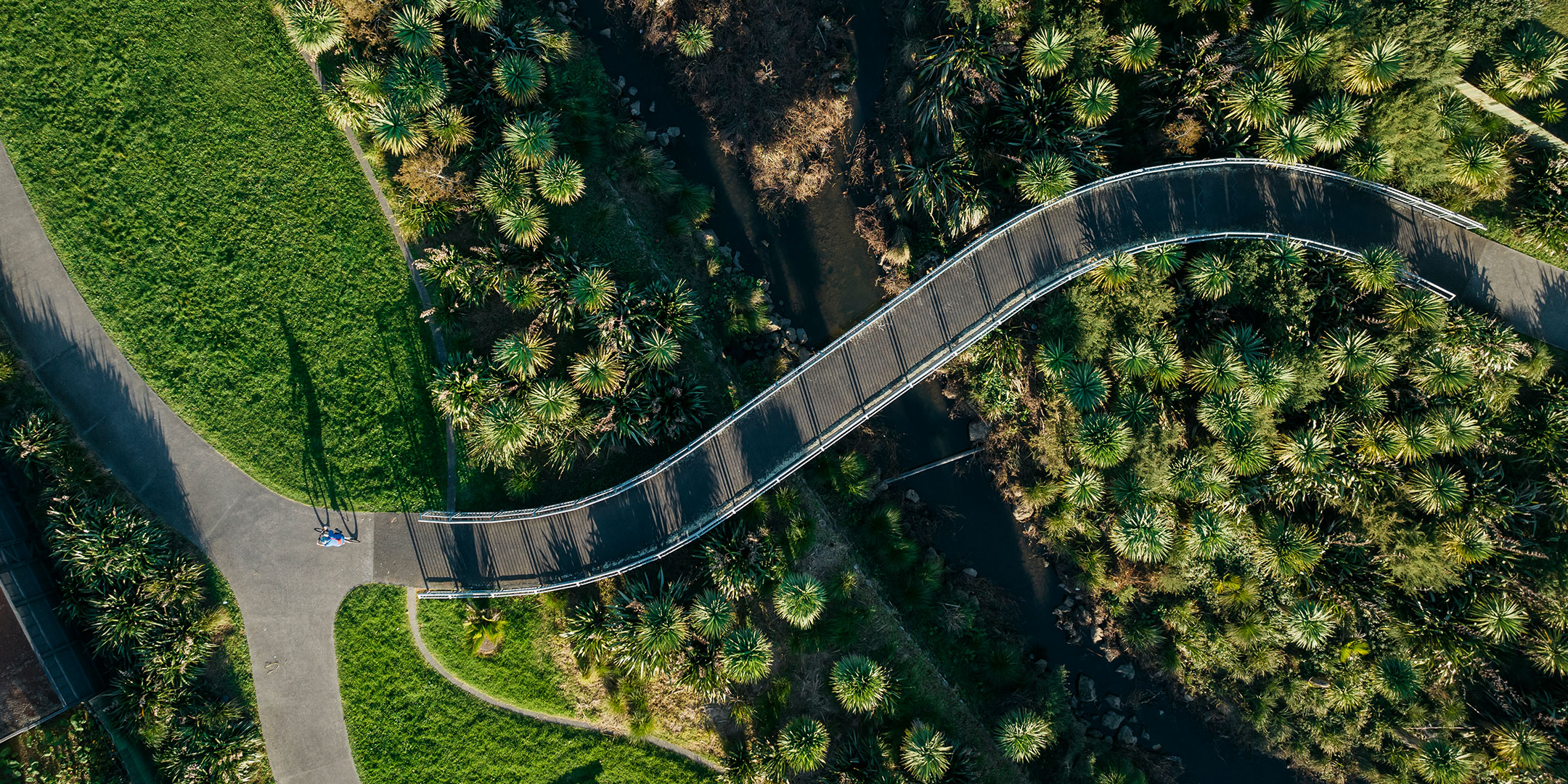Stream health in full flow
2 September 2014
Restoring waterways for improved ecological and community outcomes is an important aspect of many larger infrastructure projects

“We’ve seen emphatic support from clients and contractors, who have taken pride in these streams as they have unfolded,” says landscape architect Mark Lewis, “but the best part is seeing community members enjoy and embrace these enhanced environments.”
The implementation of these waterway projects is an all-encompassing design process, involving ecologists, urban designers, and landscape architects, and working closely with project engineers.
In recent years, bioengineering has increasingly replaced hard engineering, to create stable and functioning ecosystems based on natural stream morphologies. This design approach is carried through to construction where innovative construction methods often require Boffa Miskell ecologists and landscape architects to be on-site and work closely with contractors.
Notable examples of these types of projects are:
La Rosa stream daylighting
Liberating parts of the Avondale and Parahiku Streams from underground pipes at La Rosa Gardens Reserve in Green Bay was Auckland’s first dedicated stream daylighting project.
Oakley Creek restoration
Over two kilometres of Oakley Creek | Te Auaunga in west Auckland has been realigned and restored as part of the NZTA State Highway 20 Waterview Connection. The prject has won numerous awards for ecology and sustainability, design and engineering.
Duck Creek re-creation
Duck Creek in Whitby, Wellington, has been shifted 50 metres sideways over a length of 1km to make way for a Todd Property Group subdivision. The consent conditions required that the stream look and perform as a natural waterway, with improved Stream Ecological Values (SEV).





